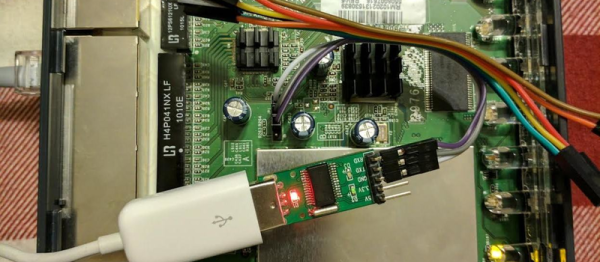[Huan Truong] was given a WiFi router and thought he’d improve it by installing a free firmware on it. Unfortunately, the router in question is a bit old, and wasn’t ever popular to begin with, which meant that it was unsupported by the usual open firmware suspects. The problem was that it only had a 4 MB flash to boot off of, but [Huan] was determined to make it work. (Spoiler: he did it, and documented it fully.)
The flash workaround consisted basically of repartitioning the space, and then telling u-boot where to find everything. On a router like the WNR2000 that [Huan] had, the flash is memory-mapped, which meant adding an offset to the flash start (0xbf000000 instead of 0x00000000) and remembering to do this consistently so that he doesn’t overwrite things like the MAC address.
[Huan] went for the LEDE fork of OpenWRT, and rebuilt it from source because he needed a small version to fit inside his limited flash. With this task completed, it worked. All done? Nope, [Huan] then submitted a pull request to LEDE, and now you can enjoy the fruits of his labor without replicating it. But if you’ve got another low-flash, obscure router, you’ve got a head start in getting LEDE up and running on it.
Routers are perhaps the most-hacked device that we see here, and they can be made pretty darn useful with the right firmware. Sometimes getting a custom firmware running is relatively easy, as it was here, and sometimes it requires some deep reverse engineering. But it’s good to keep up your router-hacking chops, because they may not always be as open as they are now.












